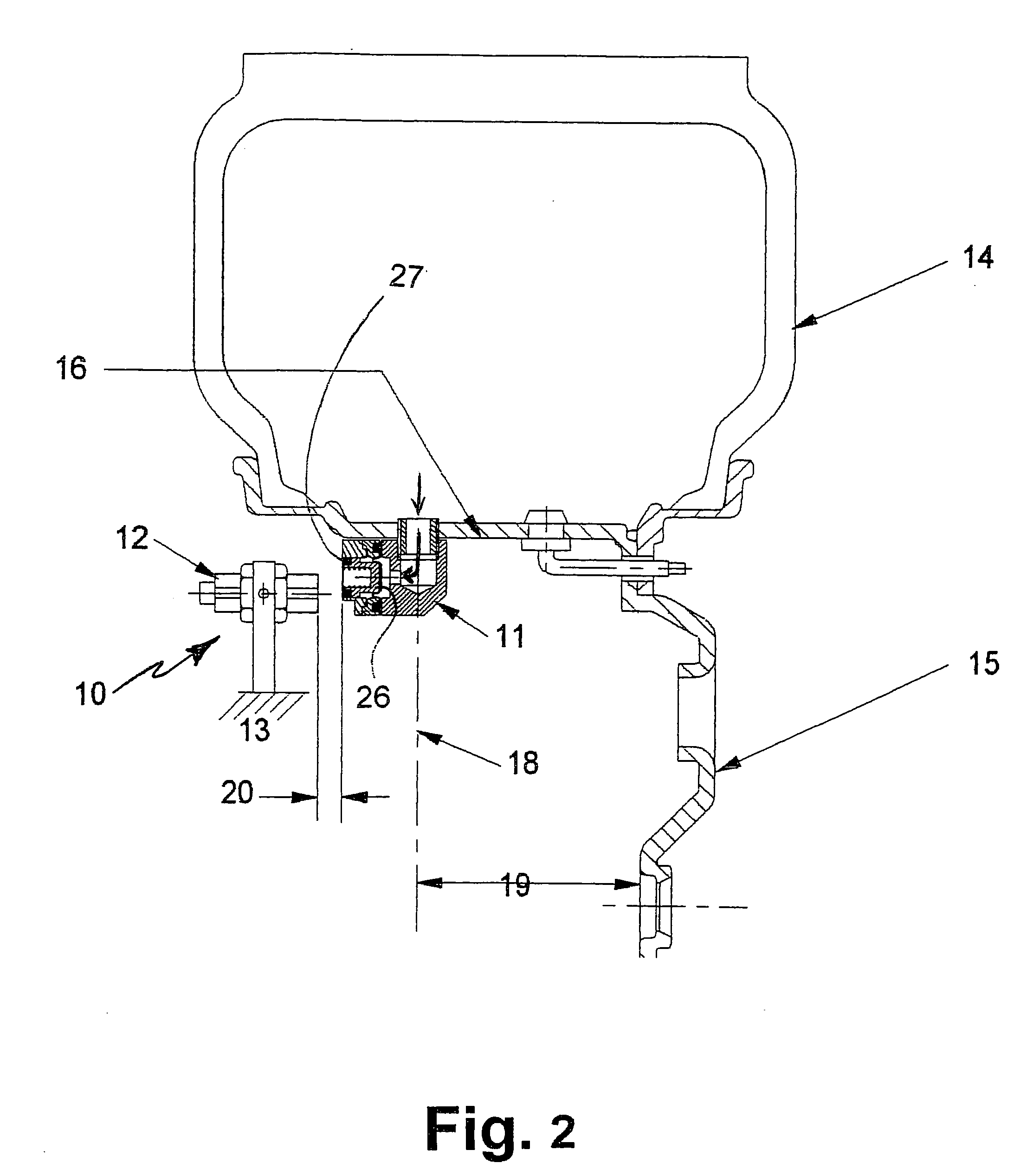Tire pressure monitoring system and method of using same
a tire pressure monitoring and tire technology, applied in the field ofhall effect tire sensors, can solve the problems of confusion of rf transmitters, lack of reliability, and prone to failure of battery powered devices
- Summary
- Abstract
- Description
- Claims
- Application Information
AI Technical Summary
Benefits of technology
Problems solved by technology
Method used
Image
Examples
Embodiment Construction
[0035] In accordance with the most preferred embodiment of the present invention, there is generally disclosed a Hall effect sensor as shown in concept form in FIG. 1 where the actuator 1 includes a magnet 4 having a magnetic field to induce a voltage 5 in a sensor 3. Sensor 3 preferably includes a semi-conductor, or silicon chip 8, generally, but may be any other type of magnetic sensor. Essentially, a tire pressure 6 is exerted against magnet 4 which is held in back by spring pressure 7. If the tire pressure 6 becomes too slight, spring pressure 7 will push magnet 4 away from Hall effect sensor 3, and the voltage 5 which is generated by magnetic field 2 will decrease to a point where it is noted that the tire pressure is to low for safe operation.
[0036] In the most basic form of the present invention, there are two components to this invention, an actuator and a sensor. The actuator is mounted on the wheel and it revolves around with the wheel. The sensor is stationary and is mou...
PUM
 Login to View More
Login to View More Abstract
Description
Claims
Application Information
 Login to View More
Login to View More - R&D
- Intellectual Property
- Life Sciences
- Materials
- Tech Scout
- Unparalleled Data Quality
- Higher Quality Content
- 60% Fewer Hallucinations
Browse by: Latest US Patents, China's latest patents, Technical Efficacy Thesaurus, Application Domain, Technology Topic, Popular Technical Reports.
© 2025 PatSnap. All rights reserved.Legal|Privacy policy|Modern Slavery Act Transparency Statement|Sitemap|About US| Contact US: help@patsnap.com



